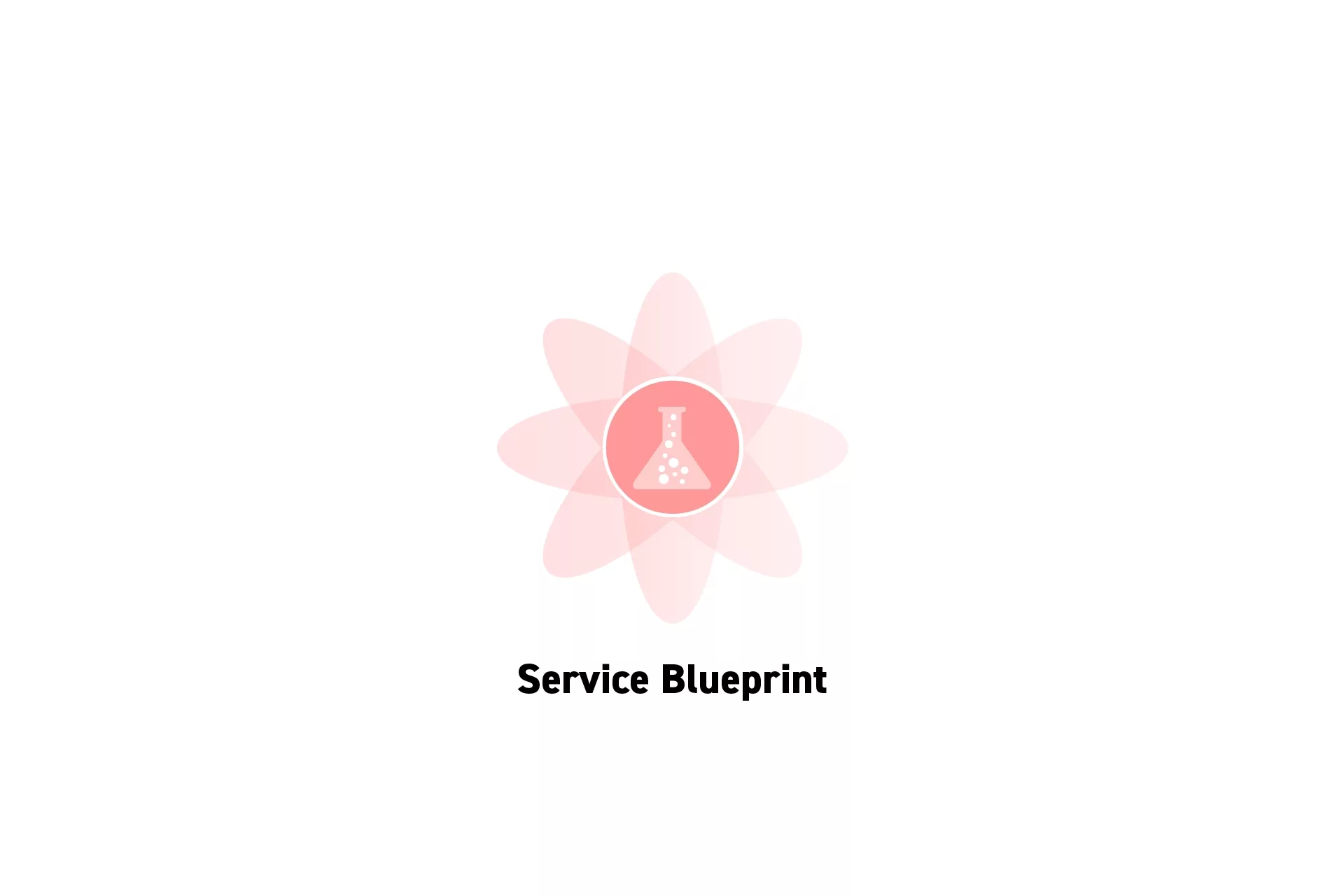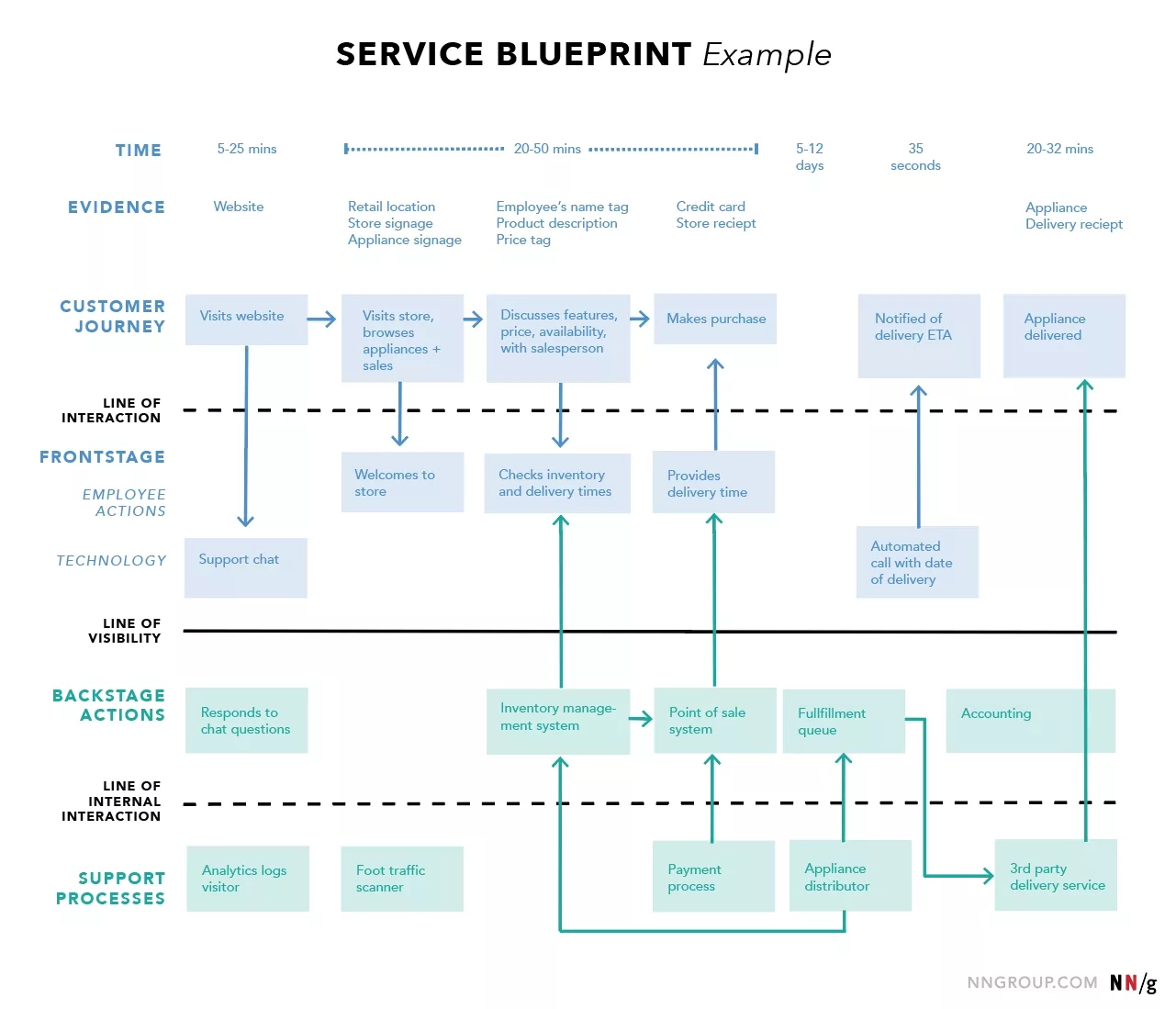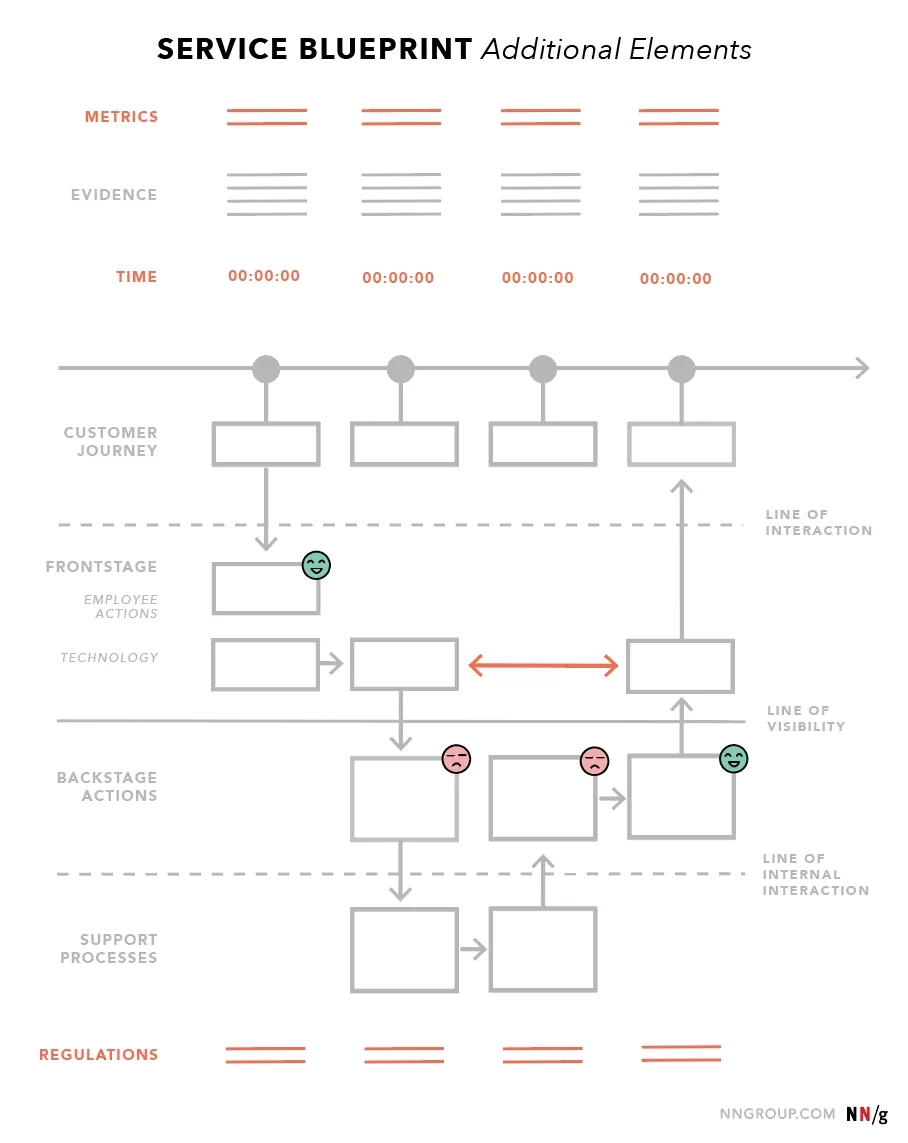What is a Service Blueprint?
A diagram that illustrates all the relationships, components and processes that enable a service to provide value to a customer.

A diagram that illustrates all the relationships, components and processes that enable a service to provide value to a customer.
SubscribeWhen creating, building off or questioning how to improve a service it is fundamental to know exactly how it works and what all the elements are that are required to make it work in its current form.
This is often visualized as a diagram known as a service blueprint which may include personas of your stakeholders and members of your target audience to help remind you who you are servicing.
What makes up a Service Blueprint?

An example blueprint for an appliance retailer by the Nielsen Norman Group.
Service Blueprints take many forms in terms of content and visualization, however the literature demonstrates that there is a base for designing a service blueprint.
The key elements that should be integrated into the service blueprint include:
A/ Customer Actions
Steps, choices, activities, and interactions that customers perform while interacting with a service to reach a particular goal. Customer actions are derived from research or a customer-journey map.
Examples include:
- The customer pressed the purchase button.
- The customer picked up the package.
- The customer ordered a coffee.
- The customer connected their device to our platform.
- The customer created an account on the platform.
B/ Frontstage Actions
Actions that are taken directly infront of the customer.
Examples include:
- The waiter took the customers order.
- The chatbot replied to the customer.
- The front-desk took the customers name down.
- The registrar noted the customers request.
C/ Backstage Actions
Actions that are taken by the system (i.e. backend service) that automates actions taken by the customer or business.
Examples include:
- An invoice was created and sent to the customer.
- An order was placed under the customers name and was sent to the factory.
- The system reduced the available inventory to demonstrate that there is now less product available.
- An email was sent to inform the company that they have a new subscriber.
- A developer committed code kicking off a CI/CD pipeline for Q/A purposes.
D/ Processes
Internal services that are required for the service to function.
Examples include:
- Credit card verification.
- Dynamic pricing.
- Delivery of packages.
- Where quality assurance takes place and how code is admitted into the system.
- How products are launched to the general public.
- Analytics.
E/ Lines
Service blueprints are broken up into clusters that are connected by lines to demonstrate how a service flows.
There are three types of lines:
- Interaction lines: Direct interactions between the business and the customer.
- Visibility lines: Lines that demonstrate interactions between the customer and the frontstage as well as the frontstage and the backstage.
- Internal Lines: Lines that demonstrate how internal processes flow.
We recommend that you use different colors and create a legend to allow a clear, visual separate between the different types of lines.

According to the Nielsen Norman group, it is optional to add Arrows, Time, Regulations and Policy, Emotion and Metrics to the diagram.
Separately, you may wish to include the following items.
I/ Arrows
Arrows should be used to indicate relationships and sequence.
Examples include:
- An email is dependent on a customer making an order (Order -> Email).
- A customer support is dependent on a customer reaching out (Customer -> Support).
- A package delivery is dependent on it having passed quality assurance (Quality Assurance -> Delivery).
II/ Time
Time is a primary variable in any service and should be included to demonstrate the estimated duration of each action.
Examples include:
- Our products are created by hand and require a 2 week lead time.
- A notification must be sent at noon to remind our customer to take their medicine.
- Package deliveries take 3-5 days after passing quality assurance.
III/ Regulations or Policy
Any policies or regulations that may affect your services should be listed.
Examples include:
- The product can only be sold if it passes FDA approval.
- An app can only be released on the App Store if it passes the App Store regulation.
- A feature can only be launched if it meets ADA requirements.
IV/ Emotion
Similarly to how emotions are illustrated in Customer Journey Maps (i.e. journey maps), service blueprints should illustrate how customers feel about a service in its current form. It will help an individual or organization perform a SWOT analysis and identify where they are at risk and where they can improve.
V/ Metrics
Measuring the impact of a service across time is fundamental to understanding how a customer feels, how they are benefiting and how the service is growing.
Examples include:
- Daily Active Users
- Monthly Active Users
- Number of Orders per day or month
- Number of returns
- Number of customer support requests
- Monthly or Annual Revenue
Want to learn how to create Service Blueprints?
To learn our approach to creating service blueprints, consult the link below.
Looking to learn more about Research and Strategy?
Search our blog to find educational content on research and strategy.